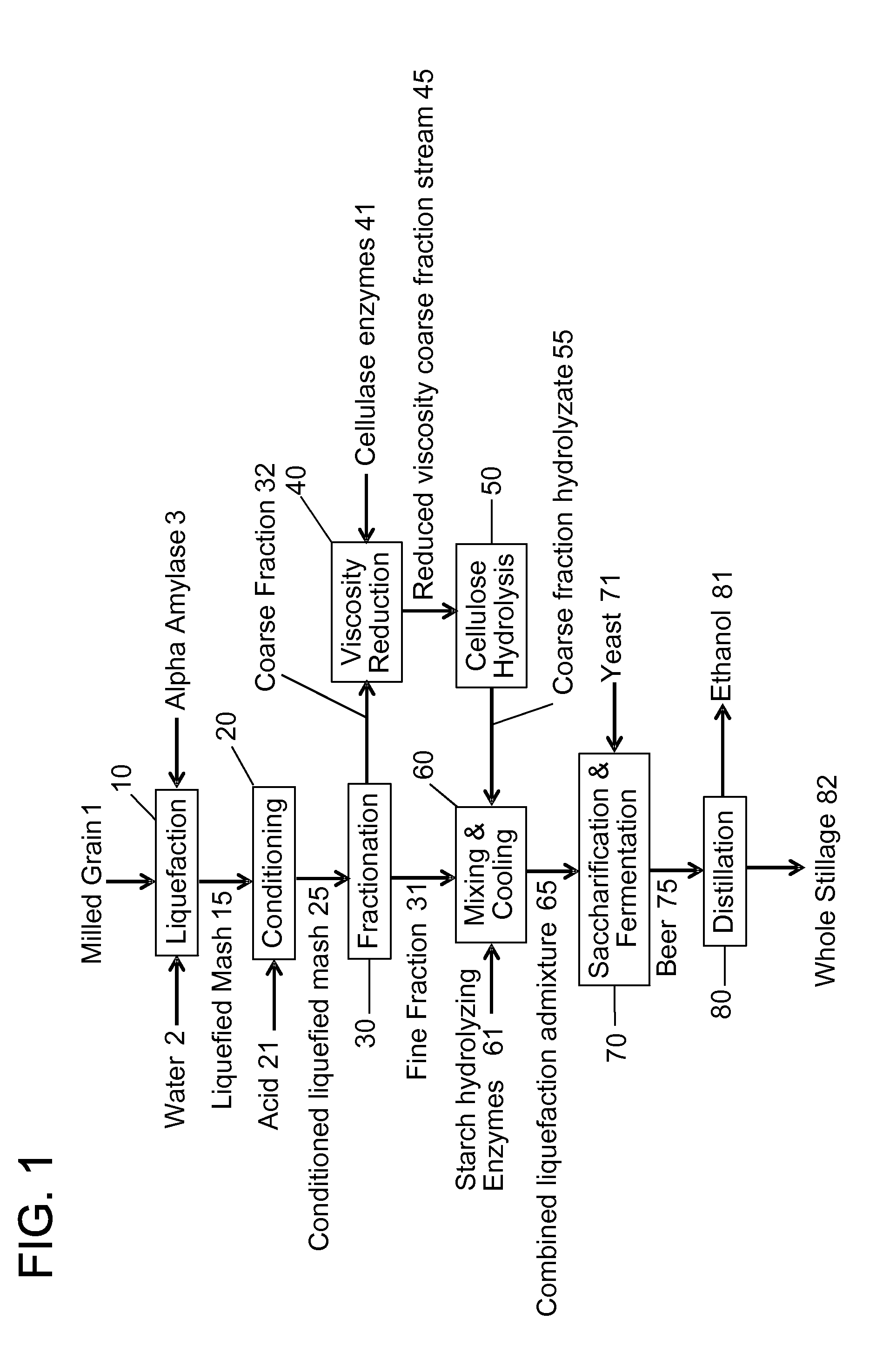Method for adding enzymes to obtain high ethanol yield from cereal mash
a cereal mash and enzyme technology, applied in the field of energy crop production processes, can solve the problems of high capital costs, reduced throughput, and approach commercially impractical, and achieve the effects of improving the efficiency of conversion, and improving the yield of ethanol
- Summary
- Abstract
- Description
- Claims
- Application Information
AI Technical Summary
Benefits of technology
Problems solved by technology
Method used
Image
Examples
example 1
[0085]A liquefied mash was prepared from a mixture of water, dry milled corn and alpha-amylase. The pH of the liquefied mash was adjusted to between 4.5 and 5.0 and fractionated through a mesh having a mesh size of from 0.5 mm to 2 mm to form a fine fraction (undersize) and coarse fraction (oversize). As shown in Table 1 below, the coarse fraction was hydrolyzed with three different cellulase loadings of 0.036, 0.18 and 0.36 wt. % Cellic® CTec3 (Novozymes) cellulase based on dry solid content of the coarse fraction, wherein those trials are designated as trial numbers 2, 3 and 4, respectively. Trial 1 was a comparative trial wherein no cellulase was added to the coarse fraction. Following a cellulase hydrolysis period, disclosed in Table 1, the hydrolyzed coarse fraction of each of trials 2-4 and the non-hydrolyzed coarse fraction of trial 1 were each combined with their respective fine fraction and inoculated with the same loading of glucoamylase and yeast. SSF was conducted for th...
PUM
| Property | Measurement | Unit |
|---|---|---|
| particle size | aaaaa | aaaaa |
| diameter | aaaaa | aaaaa |
| size | aaaaa | aaaaa |
Abstract
Description
Claims
Application Information
 Login to View More
Login to View More - R&D
- Intellectual Property
- Life Sciences
- Materials
- Tech Scout
- Unparalleled Data Quality
- Higher Quality Content
- 60% Fewer Hallucinations
Browse by: Latest US Patents, China's latest patents, Technical Efficacy Thesaurus, Application Domain, Technology Topic, Popular Technical Reports.
© 2025 PatSnap. All rights reserved.Legal|Privacy policy|Modern Slavery Act Transparency Statement|Sitemap|About US| Contact US: help@patsnap.com

